How to clean a kitchen like a pro – 10 top-to-bottom steps from cleaning experts for the ultimate hygienic cooking space
Keeping your kitchen clean will deter pests and curb cross-contamination
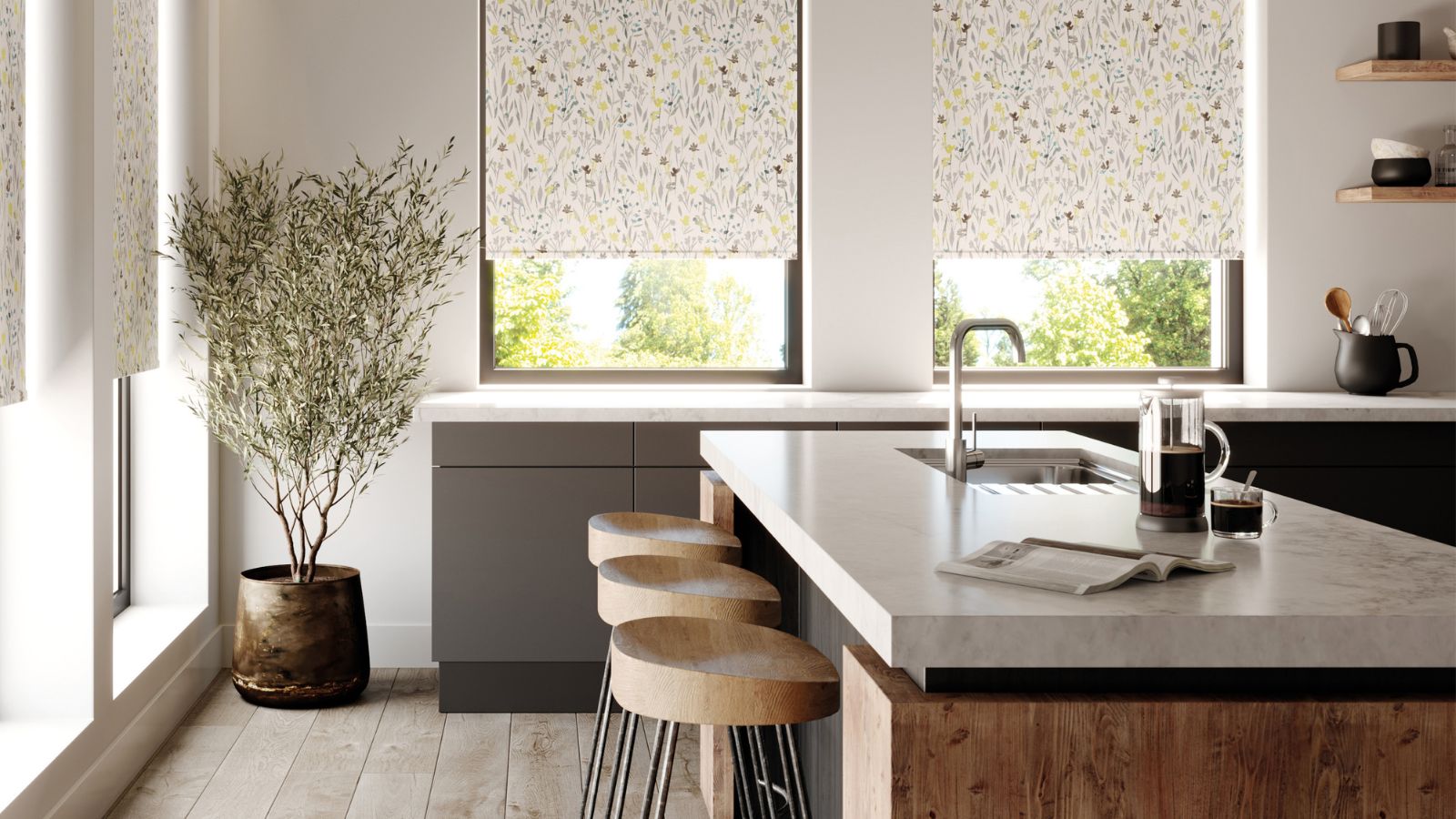

Kitchen cleaning can seem never-ending, especially since we're spending more time at home than ever before.
Here, our panel of top cleaning professionals reveal their checklist for cleaning your kitchen, packed with tips, tricks and advice so you can work out how to freshen yours up with ease – and cut down on the time you spend doing it.
From the shiniest of sinks to fresh-as-a-daisy garbage disposals, we've got cleaning tips to tackle every surface and every corner of your kitchen.
How to clean a kitchen like a pro
Before you start cleaning the kitchen, you'll need to gather some basic tools:
- Microfiber cloths, available in packs at Walmart
- A detail brush set, from Walmart, for small nooks and crannies
- A natural degreaser, such as Attitude's certified non-toxic kitchen cleaner, at Amazon
- An all-purpose cleaner, such as Attitiude's citrus all-purpose spray, from Walmart
- White vinegar, available in large containers at Walmart
- Baking soda, such as Arm & Hammer, from Walmart
- Dish soap, such as Dawn, from Walmart
- Your best vacuum cleaner with a hose attachment
1. Start with cabinets

When cleaning kitchen cabinets, start at the top and work downwards. This way, any dust or debris you brush off will land on surfaces you have yet to clean so you don't have to go back on yourself.
To clean cabinets, Rhonda Wilson, quality lead cleaner at FreshSpace Cleaning says, 'Remove all items including liners before vacuuming it out. Don't forget to also clean the tops of kitchen cabinets if yours do not reach the ceiling.
'I then wipe the shelving down with a damp cloth sprayed with an all-purpose cleaner. Let it dry, put in a new cabinet liner [from Amazon] if using, then return the items.'
You should take this opportunity to declutter your kitchen cabinets at the same time. As you take items out, check expiry dates and get rid of anything past its best. The same goes for things you don't like or never use. Combine or declutter duplicates.
To finish, wipe down the exterior of the cabinet doors and handles to kill bacteria and remove grease build-up. It's one of the dirty spots professional cleaners always notice in homes.
2. The dishwasher
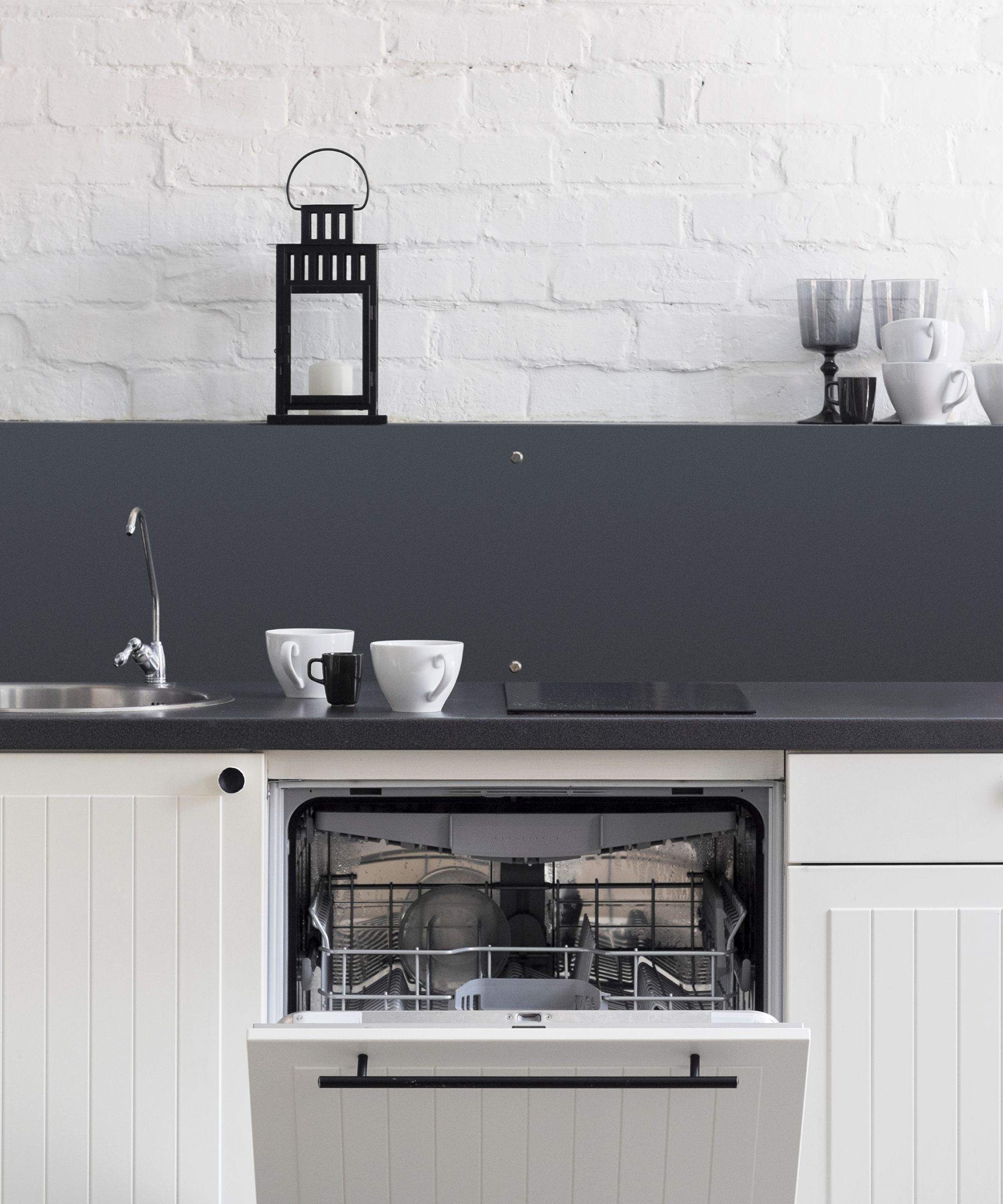
If you have one, cleaning a dishwasher should be next on your list.
Rhonda continues, 'Take out all the dishes and racks and clean out the drain area of obvious bits of gunk, removing the filter and rinsing it under the faucet to clear it of grime. You might also need to clean your dishwasher filter with an old toothbrush and some dish soap to remove tough buildup.
'I then like to pop the racks back in and throw an Affresh tablet [from Walmart] in the bottom and run a normal cycle. I like to run another hot cycle afterward just to be sure everything is properly rinsed.'
Cleaning with vinegar is a natural alternative for a fresh dishwasher in a pinch. Place a dishwasher-safe bowl full of white vinegar on the top rack and run through a cycle to clean hard-water deposits and get rid of dishwasher smells for good.
You can also keep it clean by using lemon halves in your dishwasher regularly.
3. The oven

Cleaning an oven is one of the most time-consuming tasks when it comes to cleaning a kitchen, but is vital for banishing bad kitchen smells and preventing a fire hazard.
Our favorite approach is cleaning an oven without chemicals. If you have one, deep clean a kitchen with a steamer, using a brush attachment to melt and scrub away grease from the interior of your oven without the need for cleaners.
Otherwise, cleaning with baking soda and vinegar is an eco-approach that won't risk food contamination.
Mix equal parts white vinegar with baking soda until it forms a paste, then apply it with a cloth, leaving it to sit for 10 to 15 minutes before removing it with a sponge. The Scrub Daddy Sponge, from Walmart, is great for this, as it offers a gentle abrasive that won't damage your oven, making cleaning kitchen grease a little easier on your arms.
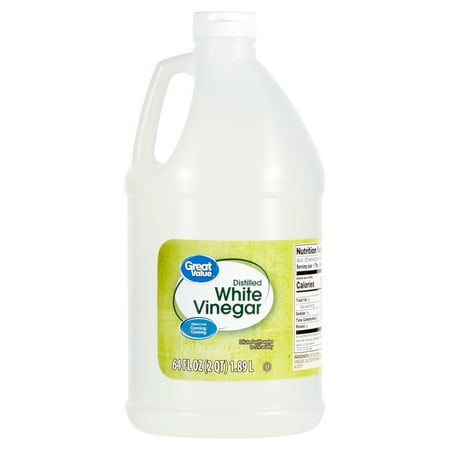
White vinegar is proven to kill bacteria and pathogens such as E.coli, making it the perfect natural cleaner for high-traffic spots like the kitchen. Use in a 1:1 ratio with water in a spray bottle.
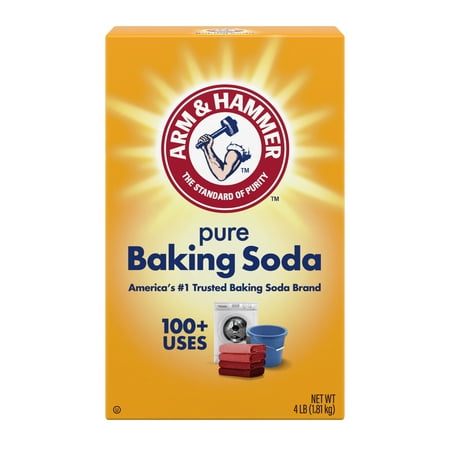
Baking soda is a natural abrasive that helps break down tough deposits without scratching delicate surfaces such as metal and glass. Mix into a paste with water or vinegar, and it is safe for use in most areas of your home.
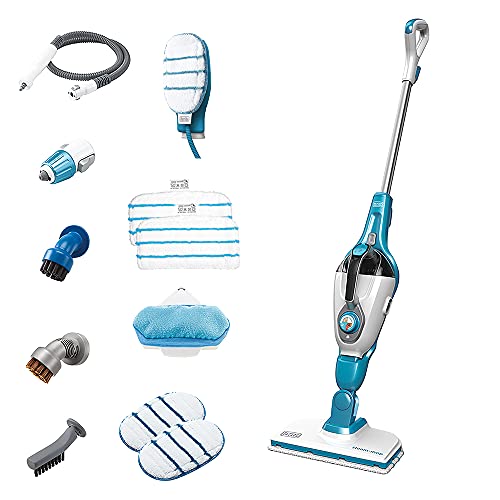
Rated H&G's best steamer, this mop comes with attachments to help you clean everything from ovens to upholstery to flooring, all without chemicals.
4. The stove and range hood

Cleaning a range hood should always come before cleaning a stove so any debris and dust don't stick to the newly cleaned surface below.
The easiest way to clean a range hood is to remove the metal mesh filters and scrub them with a soft-bristled brush in your kitchen sink with hot water and dish soap before leaving to dry completely. While you wait, use an all-purpose cleaner or degreaser and a clean cloth to polish the exterior of the range hood to remove splatter marks.
For stoves, your exact approach will differ depending on if you are cleaning electric stovetops, or cleaning stove burners.
Generally speaking, however, Aminah Vieira, head of marketing and innovation at InspireCleaning Services recommends, 'Removing tough grease from your hob by spraying it with a degreaser, leaving it to work for five minutes, and then wiping it clean with a damp cloth. You may have to do this a few times around the burner heads and control knobs.
'For stove grates, it can help to remove all removable parts and soak them in hot, soapy water while tackling burnt-on spots with a non-scratch scrubber.'
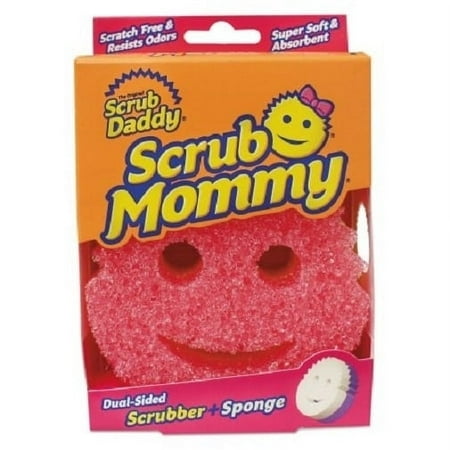
Soak the Scrub Mommy sponge in warm water before cleaning to soften the fibers and remove grease without scratching your stovetop.
5. The refrigerator and freezer
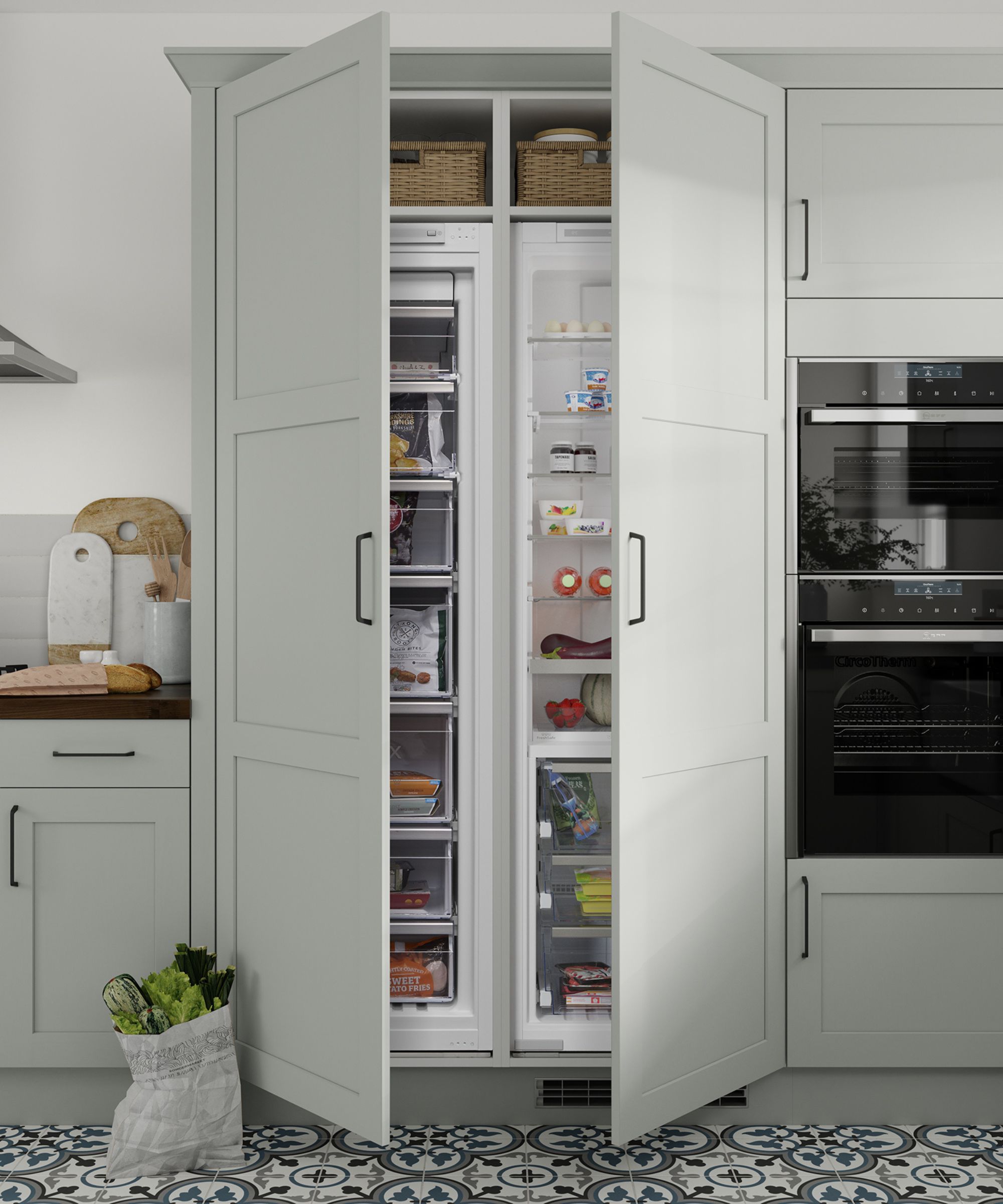
How to clean a refrigerator? Martha Stewart recommends cleaning with baking soda.
After removing food (and trashing anything that has spoiled) Martha's method is to wash the interior with a mixture of two tablespoons of baking soda per quart of warm water.
She finishes up by placing a cup of baking soda mixed with a few drops of lemon essential oil [available at Amazon] on one of the shelves and leaving it there to get rid of fridge smells. You can also try coffee and salt to deodorize a fridge, finding a use for those old grounds.
It is worth defrosting the freezer while cleaning a kitchen, too. The best option is to empty contents into a cool bag or into the refrigerator to keep them cool, and switch off power right at the start of the day; allow the ice to defrost into trays and bowls, ensuring you empty them regularly and protect the floor beneath them with old towels to avoid spills.
6. The counters
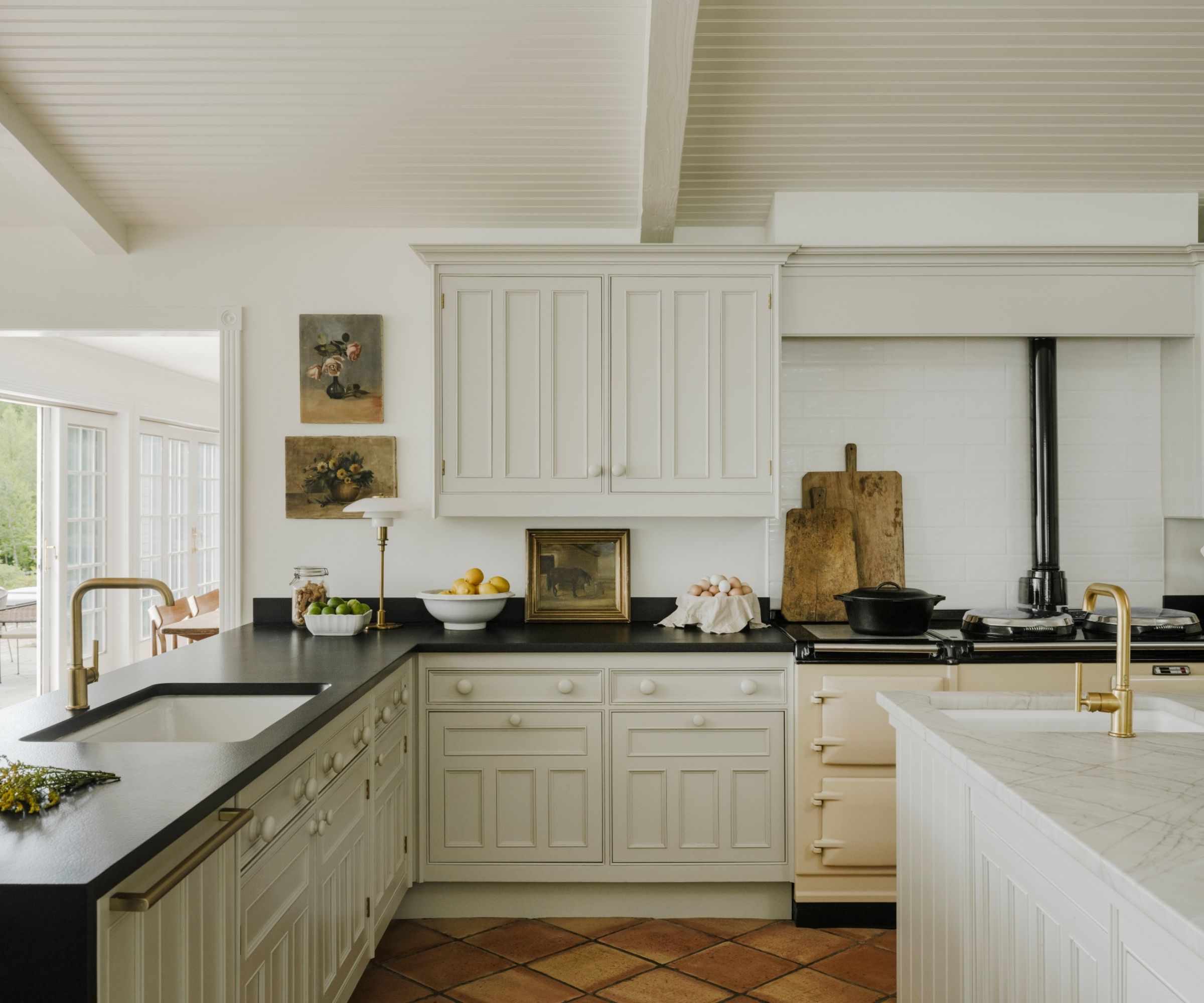
With the bulk of the dirty work out of the way, you can now clean the counters.
To start, declutter countertops, taking absolutely everything off of them to expose any dirty corners full of crumbs. It can be helpful to vacuum away crumbs with the hose attachment on your vacuum first to avoid them going everywhere.
Then, Aminah Vieira says, 'To look after your counters, use a solution of warm water and washing-up liquid with a microfibre cloth, working in small sections and drying immediately to prevent watermarks.
'Caring for natural stone worktops requires special care,' she adds. 'Use a pH-neutral cleaner [such as More Stone & Quartz Cleanser from Amazon] and avoid acidic substances like vinegar or lemon juice, which can damage the surface.'
Head of Solved, Punteha van Terheyden favors an essential oil cleaning spray she makes herself. She says, 'I add 10-20 drops of essential oil to two cups of water and a tiny squeeze of dish soap, and store in an amber spray bottle, available on Amazon. The bottle is durable and can be used over and over. The spray mix tackles the toughest grime with ease, wicks away any sticky residue and is gentle on surfaces. The dish soap acts as surfactant and this mix works great on everything from laminate, to stainless steel and glass.'
7. The sink
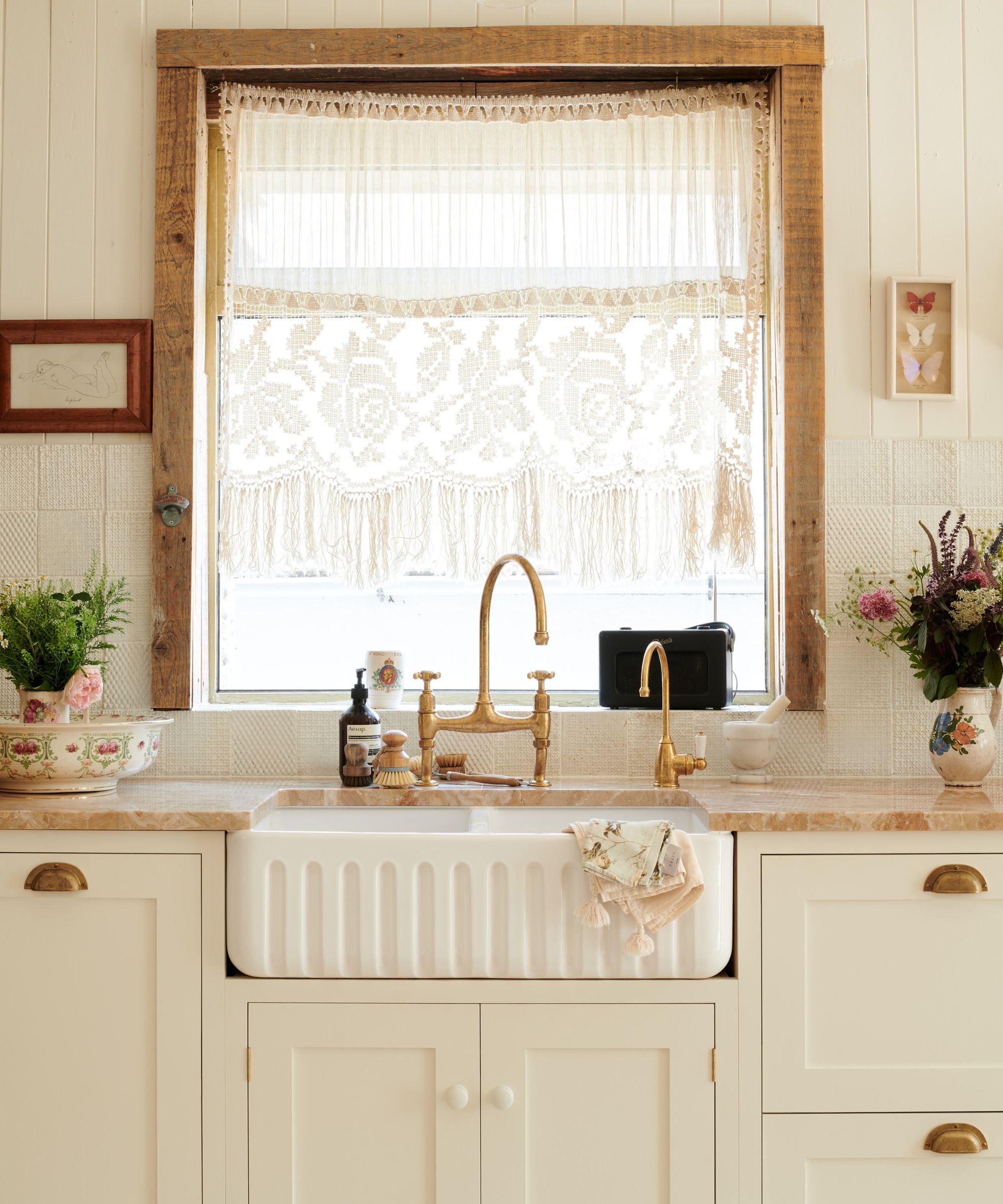
Now you have finished scrubbing smaller items, you can clean the kitchen sink. This is a task you should be doing weekly, especially if you wash dishes by hand. Wiping it down after every use is one of the many things people with clean kitchens always do to keep a kitchen spotless.
Vanessa Bossart, professional cleaner and owner of GreenTerra Cleaning says, 'First, we sprinkle a cream cleanser [like Mrs. Meyers Baking Soda Cream Cleanser, from Amazon] or baking soda around the sink basin to tackle grime and stains. Using a tile brush, we scrub grooves around the drain and faucet bases where dirt often accumulates.
'We then rinse with warm water and dry with a microfiber cloth to avoid water spots. For stainless steel sinks, polishing the faucet with a touch of vinegar adds a streak-free shine and prevents mineral buildup.'
Cleaning expert Aminah Vieira warns, 'If your sink is made of natural stone, use specialist cleaners [such as Bar Keeper's Friend granite & Stone Polish from Amazon] instead, as vinegar can cause damage.'
You can use a scrubbing brush to tackle pesky drains and tight corners or tracks. Editor Punteha tried scrubbing brushes and found them they pulled dirt out of otherwise seemingly clean sinks, traps and drains.
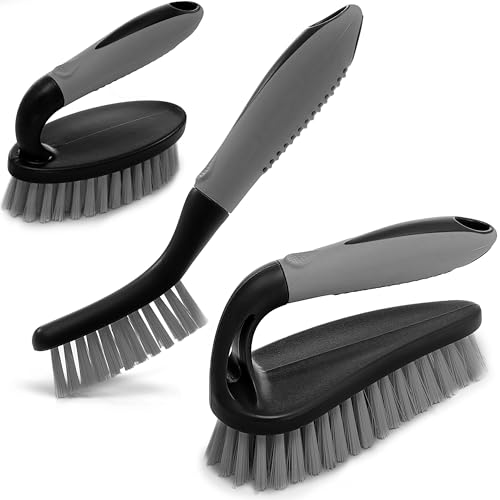
Use them in bathrooms, kitchens and around the home for effective scrubbing. Editor Punteha found scrubbing brushes pull dirt out of otherwise seemingly clean areas, especially sinks.
Don't forget to clean the garbage disposal too, if you have one.
Stephanie Gerber, natural living blogger and founder of Hello Glow has a clean and easy solution for this, and you only need white vinegar, citrus peels, and an ice cube tray.
She recommends putting a few citrus peels into an ice cube tray and filling it with vinegar. Freeze until solid and transfer to a lidded container. To use, put a cube down the disposal and run it.
Not only will it stop a garbage disposal from smelling, but the ice will help sharpen the blades too, keeping your disposal efficient for longer.
8. Countertop appliances
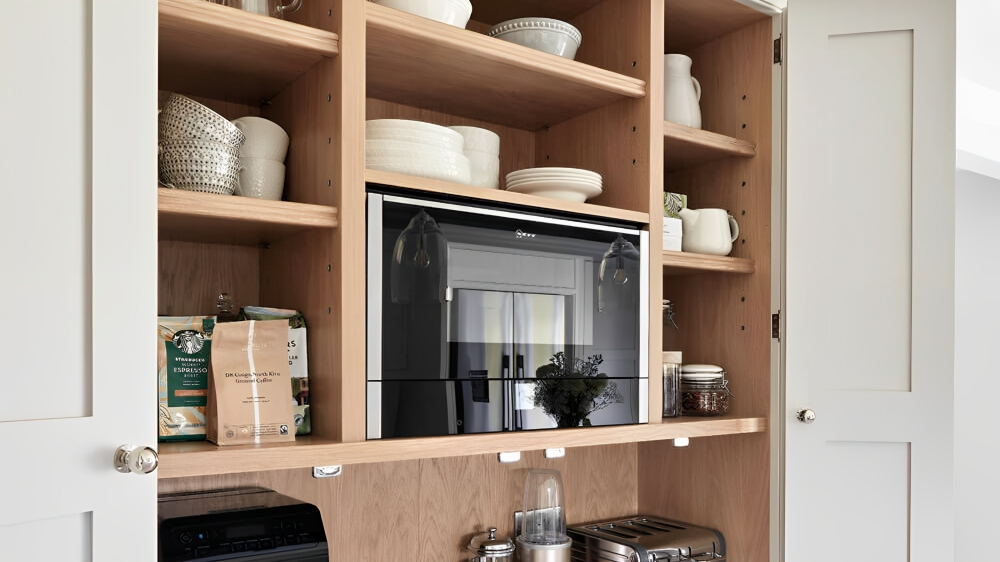
Anything on our countertop is constantly exposed to splashes and grease, so it is a good idea to give these a once over while deep cleaning your kitchen.
Aminah Vieira begins, 'Clean a microwave by heating a bowl of water with several lemon slices for three minutes, letting the steam loosen dried-on food particles. The condensation makes it easy to wipe away stuck-on spots with a damp microfibre cloth, whilst the lemon leaves your microwave smelling wonderfully fresh.'
Don't forget to clean your coffee maker while you're at it. Make this chore hassle-free by pouring white vinegar directly into the machine and letting it run once. Follow up with a few runs with only water in the tank until the smell is gone and the water runs clean. Build-up be gone!
We would caution: whether you are cleaning a kettle, cleaning a blender, cleaning an air fryer, or any other type of small appliance (including a coffee maker), always read the care manual before you clean it. Some manufacturers warn against using certain chemicals, including vinegar, and doing so may invalidate your warranty.
9. The trash can
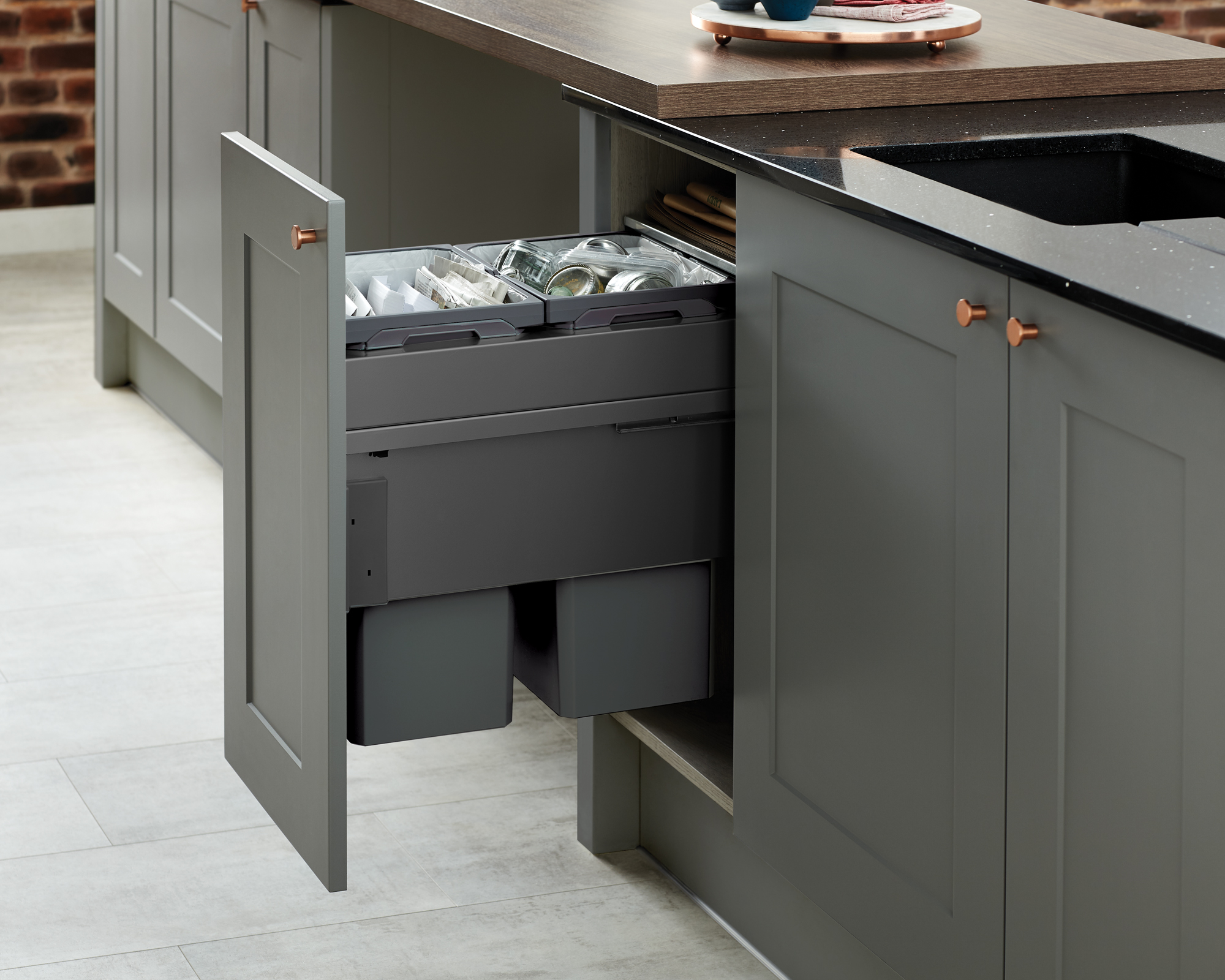
With almost everything clean, the penultimate thing to do is empty your trash can and clean it out.
With the bag removed to our outdoor waste bin, use a disinfecting spray and some paper towels to wipe out the interior of your trash can, not forgetting the inside of the lid. To mask trash can smells, you can throw a few cotton balls from Walmart, soaked in nice-smelling essential oils into the base before popping in a new bag.
Give the same treatment to the outside of the trash bin.
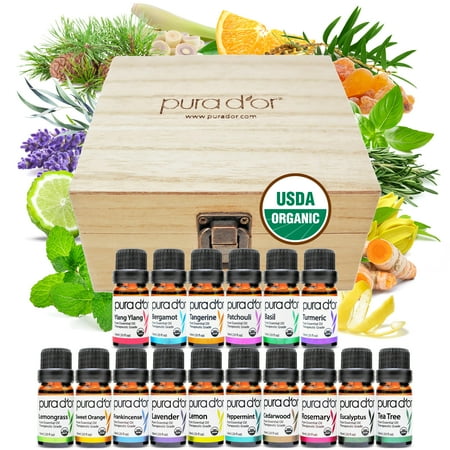
With scents ranging from lavender to tea tree, this complete starter set of essential oils is perfect for those who love to customize their home's scent and mix their own cleaning products.
10. Finish with the floor
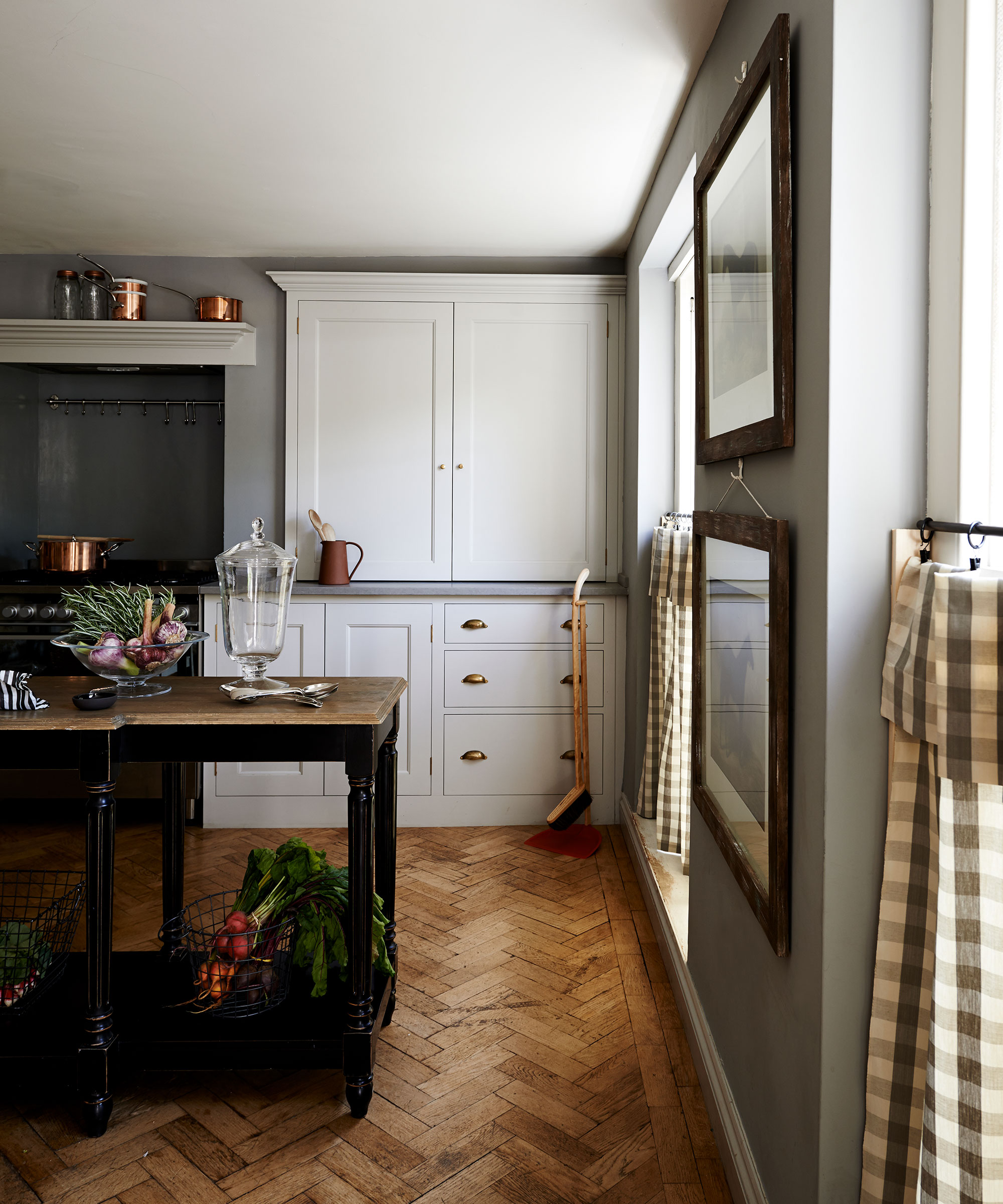
The final task when cleaning any room is to tackle the floor. This way, you pick up any crumbs or fust that has fallen and settled as you have worked.
To clean a kitchen floor, Aminah Vieira says, 'For pristine kitchen floors, start by sweeping or vacuuming to remove loose crumbs or pet hair.
'Then mop with a cleaning solution that is suited to your flooring type. Use hot water and a specialist floor cleaner for tiles, or a damp (not wet) mop for wooden floors. For tiled floors, it can be helpful to use a clean toothbrush and the cleaning solution to remove stubborn stains from the grout. Always start in the corner furthest from the door and work backward so you're not walking over cleaned areas.'
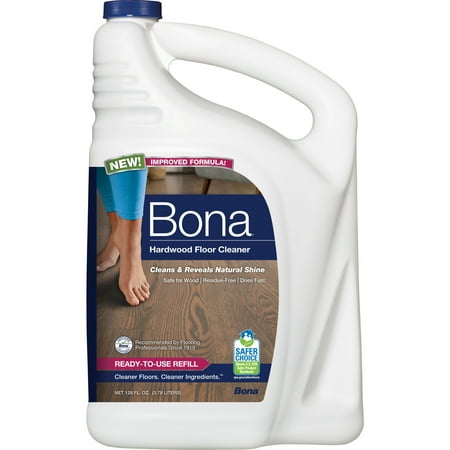
This floor cleaner is waterbased and biodegradable, formulated without formaldehyde, ammonia, petroleum, phosphates, phthalates, parabens, added dyes, or added scents.
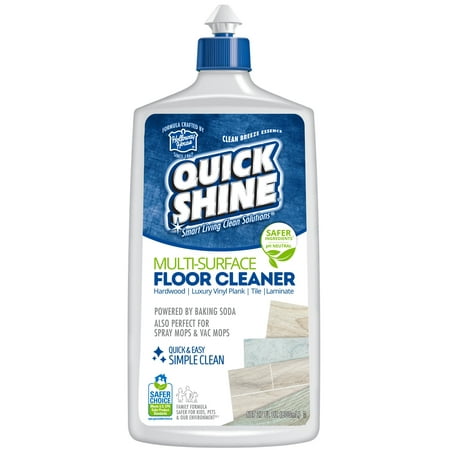
Specially formulated for hardwood, LVT, laminate, tile, stone and vinyl surfaces, this cleanser is ready to use. Simple squirt on the floor and mop.
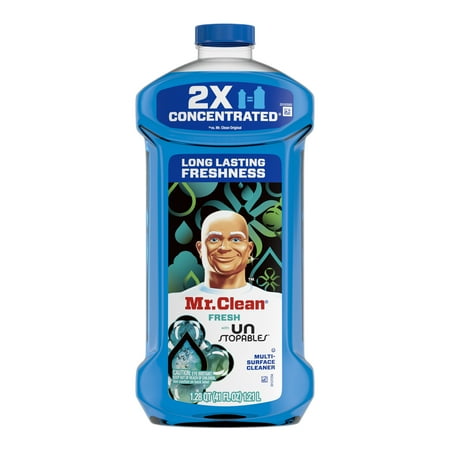
Mr. Clean’s All Purpose Cleaner works all around the house on everything from linoleum, to tile and finished hardwood floors, to toilets and bathtubs, and even garbage cans.
FAQs
How do people keep their kitchens so clean?
The most important thing people with nice-smelling, clean kitchens always do is clean as they go. When cooking, for example, they will start loading dishes into the dishwasher or cleaning down counters as things cook, helping to prevent a build-up of mess that is more difficult to get rid of later. You can also take multiple steps to banish cooking odors.
What should you avoid when cleaning a kitchen?
When cleaning a kitchen, it is best to avoid using overly astringent chemical cleaners that can leave toxic residue behind and contaminate your food. A 2020 study found that natural cleaners such as vinegar are proven to kill bacteria (including dangerous pathogens like E.coli), making it an ideal choice for a clean, healthy kitchen that is safe to cook in.
Generally speaking, you should quickly clean a kitchen weekly, focusing on the counters, sink, and stove, and deep clean a kitchen using the above guide monthly to stay on top of grime.
Following a kitchen closing shift routine nightly can also help you stay on top of mess, tackling crumbs and grease before you end up cleaning when you feel overwhelmed.
Sign up to the Homes & Gardens newsletter
Design expertise in your inbox – from inspiring decorating ideas and beautiful celebrity homes to practical gardening advice and shopping round-ups.

Thea Babington-Stitt is a Content Editor at Future. She has been an interiors journalist for nearly 10 years and has held positions at LivingEtc, Country Homes & Interiors and Homes & Gardens. Currently, she is writing for Ideal Home and Style At Home's websites and magazines.
You must confirm your public display name before commenting
Please logout and then login again, you will then be prompted to enter your display name.
-
 Everyone is obsessed with vintage tiles right now – bring the nostalgic charm of this classic design feature into your home with our 5 design ideas
Everyone is obsessed with vintage tiles right now – bring the nostalgic charm of this classic design feature into your home with our 5 design ideasHonor the past with our favorite ways to decorate with vintage tiles, as suggested by interior design experts
By Eleanor Richardson Published
-
 'It's a fast reset button' – using the 1, 2 ,3 ,4, 5 decluttering method cleared my persistent mess in seconds
'It's a fast reset button' – using the 1, 2 ,3 ,4, 5 decluttering method cleared my persistent mess in secondsIt's easy, effective and so quick to do
By Ottilie Blackhall Published
-
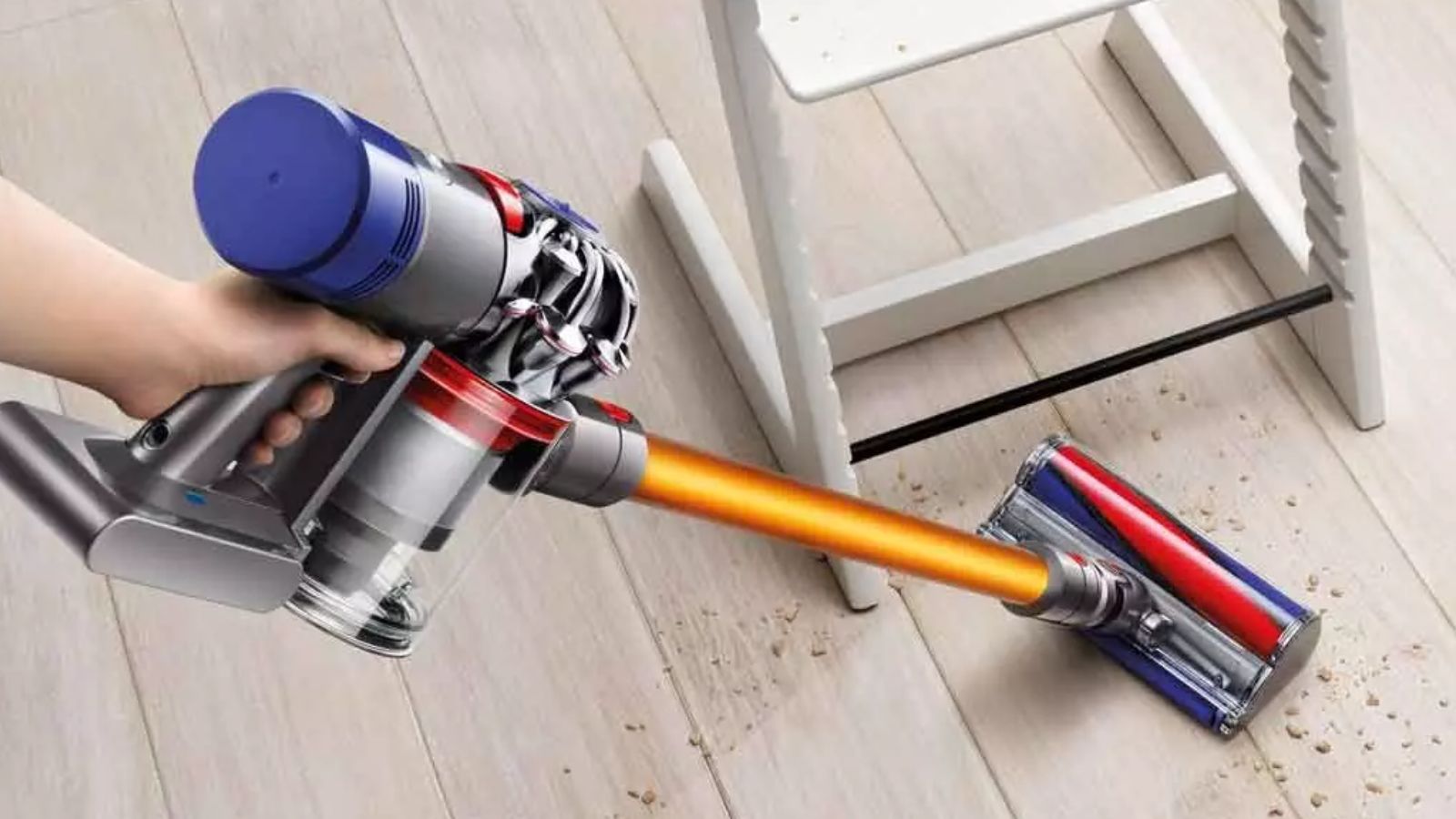 A $170 limited-time discount makes this the most affordable Dyson cordless vacuum on the market right now
A $170 limited-time discount makes this the most affordable Dyson cordless vacuum on the market right nowYears after its release, the Dyson V8 still impresses us with its features and power
By Dan Fauzi Published
-
 My Bissell pet vacuum was struggling until I cleaned the filter – here's how to do it in three quick steps
My Bissell pet vacuum was struggling until I cleaned the filter – here's how to do it in three quick stepsIt doesn't take long to restore your Bissell vacuum's suction
By Dan Fauzi Published
-
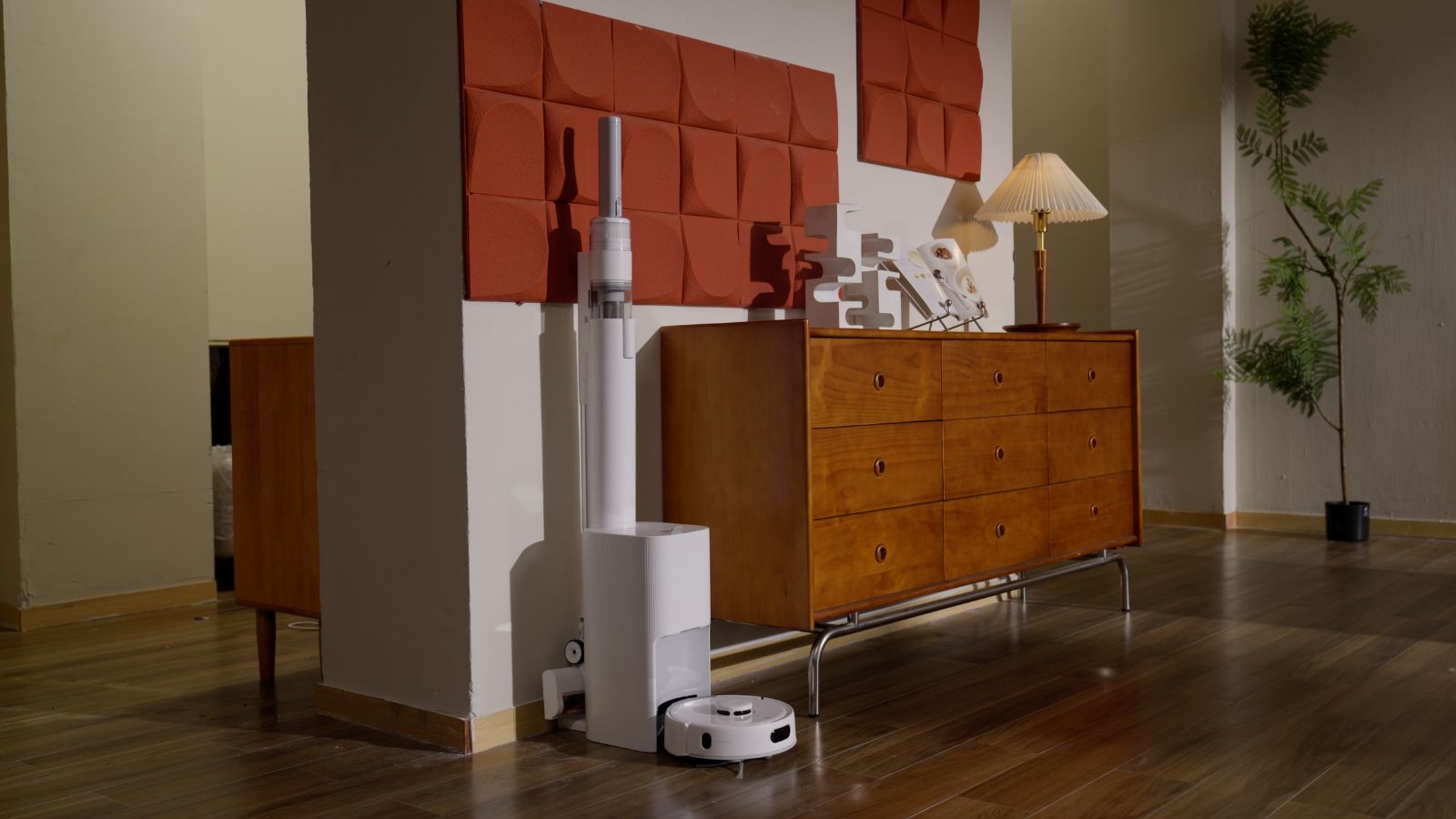 The SwitchBot K10+ Pro Robot Vacuum Combo is good for small spaces – but the mopping function falls short
The SwitchBot K10+ Pro Robot Vacuum Combo is good for small spaces – but the mopping function falls shortI tried the world's smallest robot vacuum in my busy home with 4 dogs. This is how it fared
By Ottilie Blackhall Published
-
 Pet vacuums vs. regular vacuums – what's the difference, and which do you really need?
Pet vacuums vs. regular vacuums – what's the difference, and which do you really need?As a home tech expert who has spent 200+ hours testing vacuums, here's the lowdown on special 'pet' vacuums
By Dan Fauzi Published
-
 6 essential money-saving spring cleaning hacks – save as you spruce
6 essential money-saving spring cleaning hacks – save as you spruceSpring cleaning doesn’t need to come with a hefty price tag
By Andy van Terheyden Published
-
 My mom told me this skin spray is great for stripping stubborn, sticky residue from surfaces – she was so right
My mom told me this skin spray is great for stripping stubborn, sticky residue from surfaces – she was so rightSkip frustrating scrubbing and enjoy easy removal with just one product
By Chiana Dickson Published
-
 I've spent 200+ hours testing vacuums – I think these 4 vacuum features are gimmicks and not worth the spend
I've spent 200+ hours testing vacuums – I think these 4 vacuum features are gimmicks and not worth the spendNot every vacuum needs to be able to do everything
By Dan Fauzi Published
-
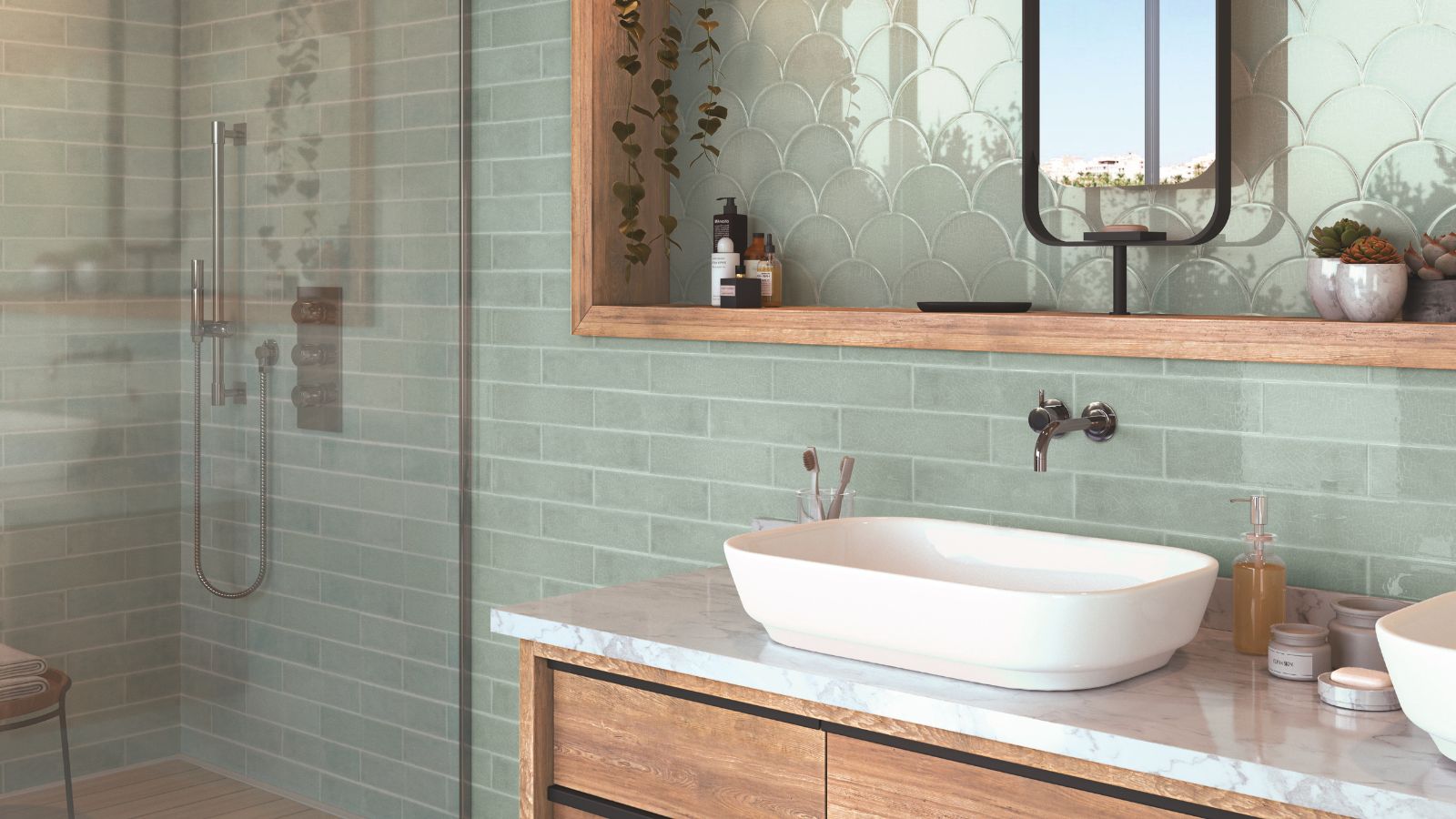 'It was like magic' – 4 highly-rated toilet limescale cleaners people swear by
'It was like magic' – 4 highly-rated toilet limescale cleaners people swear byThey’re tested – and loved – by everyday homeowners
By Chiana Dickson Published